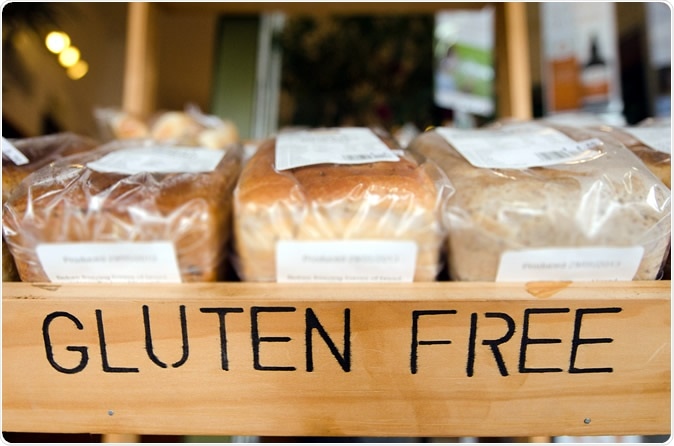Many people have wondered whether the gluten-free labeling on their groceries was true. Now, scientists in Australia have come up with a way to identify the presence of specific glutens in rye that indicate the presence of this grain in foods labeled “gluten-free”. Gluten is already known to be present in wheat, barley and oats. With this discovery, say the scientists, they have completed the ‘Grand Slam’ of grains containing gluten. The new test was announced during the Australian National Science Week.
Gluten is a plant protein that is thought to cause allergies and gut trouble in many people with celiac disease, who are therefore unable to eat foods containing any trace of these grains. Gluten apparently triggers an autoimmune reaction with the gut mucosal cells, causing cramping pain, bloating and abdominal discomfort. Celiac disease can only be cured by lifelong abstinence from gluten-containing foods.

CSIRO protein analytics expert, Professor Michelle Colgrave. ©CSIRO
According to WHO criteria for gluten-free labeling, the concentration of gluten in a food must be less than 20 mg/kg. However, in Australia a product may only be labeled gluten-free if there is no detectable gluten, and if the ingredient list does not contain wheat, barley, rye or oats.
Commercial tests for gluten are available to detect the presence of gluten in a food, and how much of it is present, though this varies in accuracy from kit to kit. However, they cannot tell which grain it comes from.
It is easy to detect the presence of gluten in a grain, but the process is not so straightforward when it comes to commercially available flours and grain products which have been baked or otherwise processed, with added ingredients.

Gluten free breads. Image Credit: ChameleonsEye / Shutterstock
The motivation for the new test from Australia’s Commonwealth Scientific and Industrial Research Organization (CSIRO) was to help detect the presence of gluten in any kind of food or drink, especially containing rye, which would build trust in gluten-free labeling. Researcher Michelle Colgrave says, “Being able to detect any protein in diverse foods and beverages will help food companies ensure that what's in the pack is what's on the pack, and help consumers trust pack labelling around gluten-free claims.”
Conventional tests for gluten are based on immunoassays, using antibodies specifically directed against gluten. However, these often cross-react with non-gluten proteins because of similar antigens. They are also not capable of specifically identifying the source of detected gluten as there are a variety of glutens in commercially available food, and because the gluten variants (called ‘isoforms’) in rye and wheat are closely similar. As a result, the team chose to use a liquid chromatography-mass spectrometry approach.
The new test was built on 20 rye varieties, originating from 12 countries. After milling each cultivar into flour, they removed the gluten for analysis. Using high resolution mass spectrometry, they looked at the complete set of proteins in each variant. This allowed them to identify six types of proteins that were unique to rye, not appearing in any other grains.
When applied to a range of other products, including commercial grains, pseudocereal grains, snacks and breakfast cereals, the researchers found that the six unique rye proteins were detected in all foods listing rye as an ingredient. However, contrary to the gluten-free label on a certain breakfast cereal, it contained tiny amounts of rye, which did not appear on the product’s ingredient list. They also found one spelt sample which contained about 2% rye as a contaminant. Spelt is a grain closely related to wheat.
The CSIRO team will continue to test the method for still higher accuracy and also to put it on a commercialization track, in collaboration with the food industry and commercial testing laboratories. Professor Colgrave says, “This technology offers many applications for the food industry from helping track contamination in their raw ingredient supply chain, to improving product quality, food safety and meeting regulations.”
The research is published in the Journal of Proteome Research.
Journal reference:
Catcher of the Rye: Detection of Rye, a Gluten-Containing Grain, by LC–MS/MS, Daniel Pasquali, Malcolm Blundell, Crispin A. Howitt, and Michelle L. Colgrave, Journal of Proteome Research Article ASAP, DOI: 10.1021/acs.jproteome.9b00314, https://pubs.acs.org/doi/10.1021/acs.jproteome.9b00314